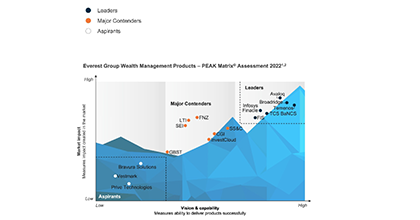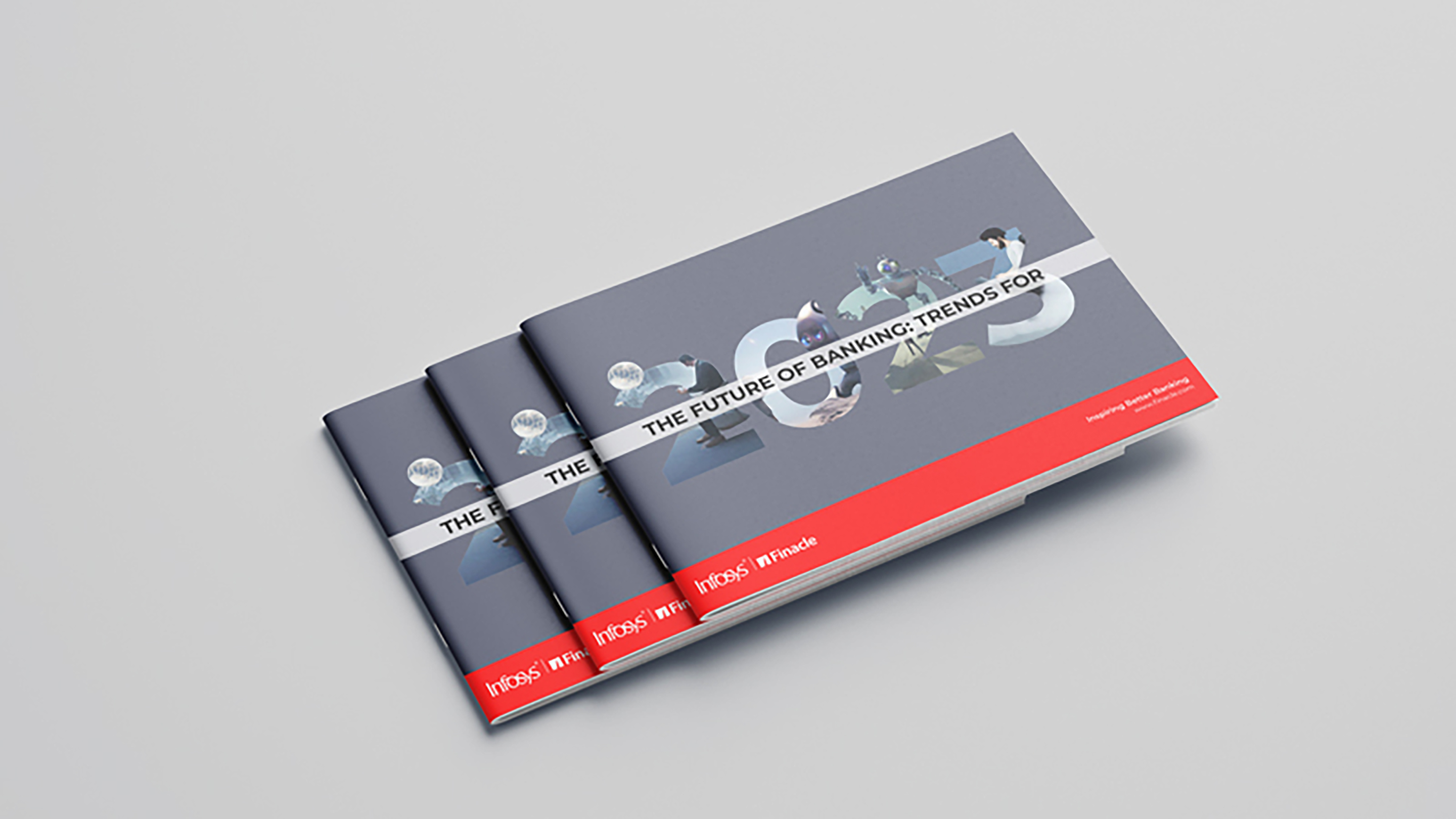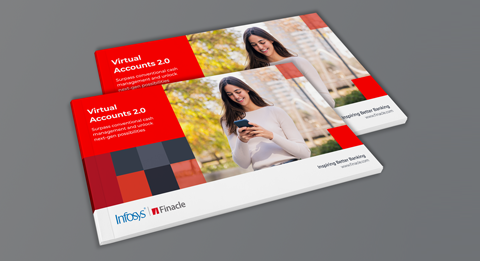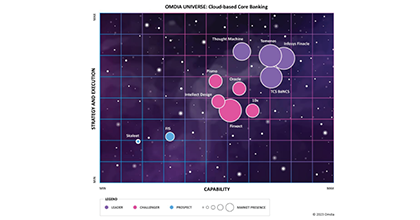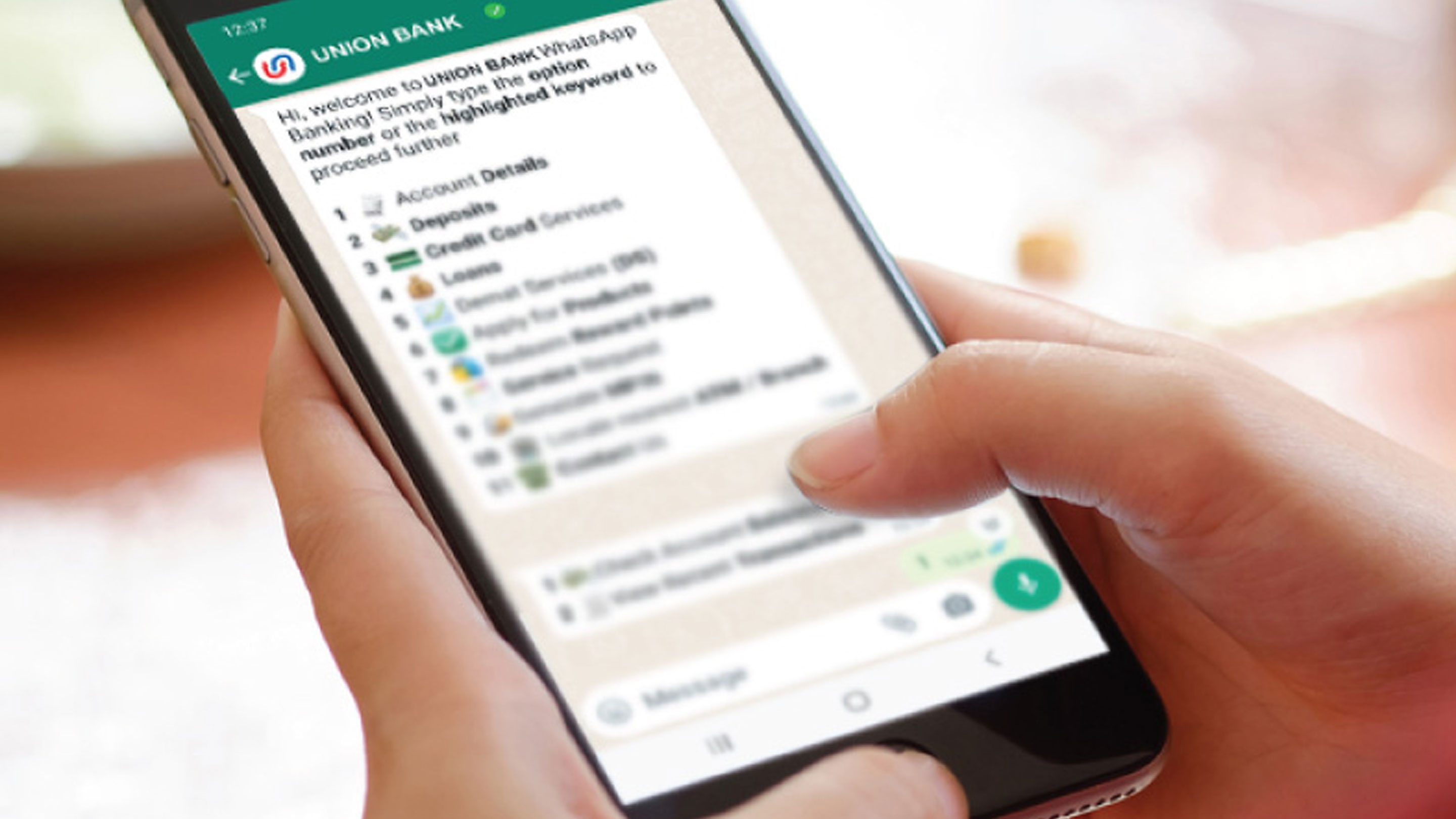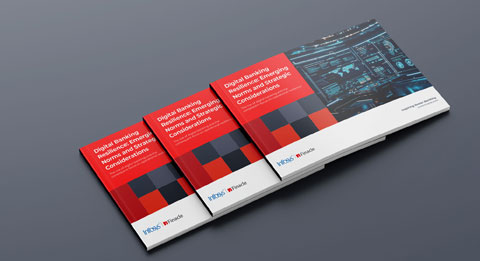-
![]() ESG in bankingESG-conscious banking should create new and future-proof value streams to build a sustainable and resilient business.Read More
ESG in bankingESG-conscious banking should create new and future-proof value streams to build a sustainable and resilient business.Read More -
![Everest Group PEAK Matri Everest Group PEAK Matri]() Everest Group PEAK MatrixA comprehensive solution delivering a full spectrum of wealth products as great experiences. It also improves the productivity of financial advisors and streamlRead More
Everest Group PEAK MatrixA comprehensive solution delivering a full spectrum of wealth products as great experiences. It also improves the productivity of financial advisors and streamlRead More -
![]() Subsidiary of an American Bank in IndonesiaFind out how a leading American bank adapts to a digitalized trade and supply chain finance operations as a part of its larger transformation by leveraging Finacle Trade Finance Solution Suite.Read More
Subsidiary of an American Bank in IndonesiaFind out how a leading American bank adapts to a digitalized trade and supply chain finance operations as a part of its larger transformation by leveraging Finacle Trade Finance Solution Suite.Read More
-
![]() Recomposing Banking: Leading the Digital ContinuumReport gives you a glimpse of the major areas where recomposing banking will create significant impact and value, Infosys Finacle has put together a report on..Read More
Recomposing Banking: Leading the Digital ContinuumReport gives you a glimpse of the major areas where recomposing banking will create significant impact and value, Infosys Finacle has put together a report on..Read More -
![]() Core Banking on Cloud: Navigating to the Fast LaneTake a deep dive into cloud-based core banking and explore the imperatives, opportunities and challenges, and the hallmarks of a robust solution.Read More
Core Banking on Cloud: Navigating to the Fast LaneTake a deep dive into cloud-based core banking and explore the imperatives, opportunities and challenges, and the hallmarks of a robust solution.Read More -
![]() Embracing Payments ComposabilityA step-by-step guide for maximizing Real Time Payment opportunities by embracing Payments Composability...Read More
Embracing Payments ComposabilityA step-by-step guide for maximizing Real Time Payment opportunities by embracing Payments Composability...Read More
-
![]() Shaping Banking’s Next: Banking Technology Trends for 2025 and BeyondThe banking industry has been balancing disruption and opportunity for several years now, and the pace of change shows no signs of slowing as we move into 2025 and beyond.Read More
Shaping Banking’s Next: Banking Technology Trends for 2025 and BeyondThe banking industry has been balancing disruption and opportunity for several years now, and the pace of change shows no signs of slowing as we move into 2025 and beyond.Read More -
![]() Virtual Accounts 2.0: Surpass Conventional Cash Management and Unlock Next-Gen PossibilitiesVirtual Account Management was a groundbreaking shift in the banking landscape, revolutionising use cases like cash concentration, pooling, centralised treasury management, and in-house banking (POBO, ROBO, COBO)Read More
Virtual Accounts 2.0: Surpass Conventional Cash Management and Unlock Next-Gen PossibilitiesVirtual Account Management was a groundbreaking shift in the banking landscape, revolutionising use cases like cash concentration, pooling, centralised treasury management, and in-house banking (POBO, ROBO, COBO)Read More -
![]() Unlocking Hybrid CloudAs banks push forward with their digital transformation agenda, cloud serves as a pivotal enabler. Each bank, at varying stages of adoption, crafts its unique path, dictated by context, regulations, and risk appetite.Read More
Unlocking Hybrid CloudAs banks push forward with their digital transformation agenda, cloud serves as a pivotal enabler. Each bank, at varying stages of adoption, crafts its unique path, dictated by context, regulations, and risk appetite.Read More
-
![]() Banking on CloudThis report from Infosys Finacle delves into the need for accelerating cloud adoption, highlights the current state of the industry, and puts forth key recommenRead More
Banking on CloudThis report from Infosys Finacle delves into the need for accelerating cloud adoption, highlights the current state of the industry, and puts forth key recommenRead More -
![]() Omdia Universe | Cloud-based Core BankingIn the report, Omdia highlights the following key capabilities of leading cloud-based core banking providers:Read more
Omdia Universe | Cloud-based Core BankingIn the report, Omdia highlights the following key capabilities of leading cloud-based core banking providers:Read more
-
![]() Emirates NBDEmirates NBD consolidates its operations on a single version for scalability, agility, and standardization.Read More
Emirates NBDEmirates NBD consolidates its operations on a single version for scalability, agility, and standardization.Read More -
![]() A Global Top 5 BankDiscover how a global top 5 bank headquartered in the US accelerated payments transformation.Read More
A Global Top 5 BankDiscover how a global top 5 bank headquartered in the US accelerated payments transformation.Read More -
![]() Union Bank of IndiaUnion Bank of India launches Union Virtual Connect (UVConn) by leveraging WhatsApp to provide customers personalized banking services.Read More
Union Bank of IndiaUnion Bank of India launches Union Virtual Connect (UVConn) by leveraging WhatsApp to provide customers personalized banking services.Read More

Iot in Banking – Enabling Banks’ Digital Future
Blogs
IoT has the potential to impact traditional business processes in banking such as KYC, lending, collateral management, trade finance, payments, PFM, and insurance. Coupled with other emerging technologies, such as digital identity and smart contacts, IoT can create new P2P business models that have the potential to disrupt banking in a few areas. Listed below are few use cases that may be adopted in banking in a time span ranging from near-term to long-term.
- Account Management on Things
As more devices acquire digital interfaces, the term “mobile” or “digital” banking will acquire new meaning and customers will be able to access their bank accounts from practically any “thing” that has a digital interface – for instance, from entertainment systems in autonomous cars or planes.
Banks will be aware of the context of the channel and can provide appropriate contextualized service or advice enriching the interaction experience. Biometrics – voice or touch – can simplify account access in these new “anywhere” digital channels. Processes requiring physical signatures could use “Wet Ink” technology, i.e. The customer can remotely sign through any touch screen device and the signature can be cloned onto physical paper with “Wet Ink”. This will eliminate barriers associated with in-person, paper-based transactions and enable clients to conduct business even when they cannot be physically present. - Leasing Finance Automation
Real-time monitoring of wear and tear of assets as well as metrics like asset usage and idle time could provide important data points for pricing of leased assets. This could lead to introduction of a new daily leasing model for a wide variety of digitally enabled assets – effectively turning even traditional products into services. Terms of leasing could be simplified and automated as the bank wields greater control over the leased asset. For instance, in case of contract termination or default, the leased asset could be locked or disabled remotely by the bank. - Smart Collaterals
IoT technology can enable banks to have better control over a customer’s mortgaged assets, such as cars, and also monitor their health. In such a scenario, a retail or SME customer could possibly raise short-term small finance by offering manufacturing machinery, cars, or expensive home appliances as collateral. The request for financing as well as the transfer of ownership could be automatic and completely digital. Enabled by digital identity for people as well as things, the transfer of ownership of an asset can be achieved in a matter of seconds. The bank can then issue the loan immediately, and monitor the collateral status in real-time without the need to take physical custody of the asset. The bank can remotely disable or enable the machine/motor anytime based on defined business rules. For instance, in case loan EMIs are not paid, the engine could be disabled. The quality of the collateral can also be monitored in near real-time.
IoT has the potential to reimagine banking as we know it completely. And it is more important than ever for banks to look at providing services and products on the channels that their customers prefer. In 2017 and beyond we will see progressive banks take it a step further and provide “banking on things” – which can be anything from a smart car, to smart walls.
Click here to read my article on ‘IoT in Banking – Enabling Banks’ Digital Future’ for the complete list of 12 use cases that may be adopted in banking in a time span ranging from near-term to long-term.
Ethan Wang has over 15 years of experience in information technology and banking. He works with the Finacle Product Strategy Team, based in Singapore. His primary focus is thought-leadership collaboration and product innovation – including digitalization, Fintech ecosystem and new technology/business-model trends especially in APAC region. Prior to joining Infosys, Ethan was a Research Director from Gartner’s global banking advisory team. He was also a wealth management banker at HSBC and held a variety of senior consulting roles at IBM.


©2025 -Edgeverve Systems Limited | All rights reserved

